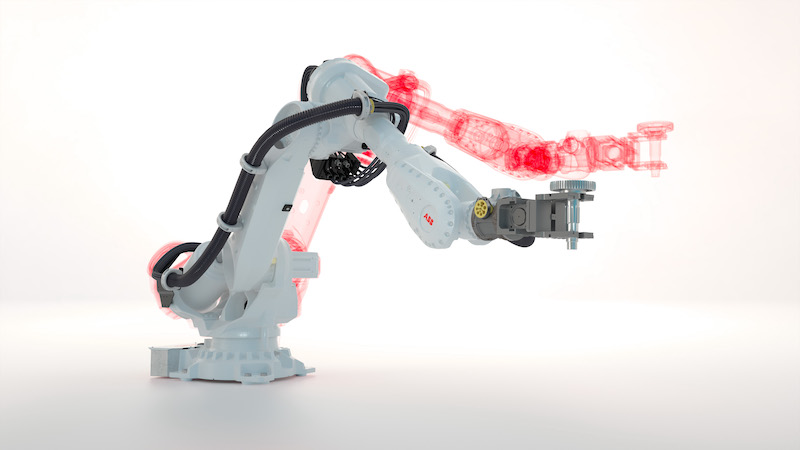ABB says its RobotStudio’s new braking distance simulator reduces robotic cell footprint by ‘up to 25 percent’
ABB’s RobotStudio offline programming and simulation software has been upgraded with a new virtual robot braking distance function designed to create an exact simulation of the real-world stopping distance of a robot.
Enabling the robot’s braking distance to be accurately calculated, the function overcomes the need to add safety margins into cell designs, enabling space savings of up to 25 percent.
Predicting exactly where a robot will stop depends on a range of variables including speed, payload and the robot’s own inertia. These factors, individually or combined, can result in the robot coming to a halt outside of its safety zone, sometimes by several meters.
To compensate for the variability in stopping distances, engineers designing robot cells traditionally oversize them to allow for additional movement as the robot comes to a stop, which uses unnecessary space on the factory floor.
The new RobotStudio function uses ABB’s superior motion control technology to predict the robot’s movements with millimetric precision.

This allows the exact movement of the robot to be simulated in RobotStudio, enabling the user to determine the correct size of the safety zone required, and the ideal location of features including light curtains, safety fencing and controllers.
For applications using ABB’s SafeMove software, the data on the robot’s final position can be used to determine the size of the “green”, “amber” and “red” zones where the robot will either continue working, slow down or come to a halt, depending on the location of the operator.
This is especially beneficial in collaborative applications where operators need to be confident that a robot has stopped before approaching it.
Antti Matinlauri, head of product management for ABB Robotics, says: “Our new robot braking distance function for RobotStudio equips the user with information about a robot’s real-world movements with an unprecedented level of accuracy.
“Predicting the braking behavior of a robot with its payload will help system integrators and end users save time and costs, with up to 25 percent reduction in the footprint when it comes to designing and building a robot cell or setting up a safety zone.
“This will help our customers optimize their processes and get the most out of their automation solutions.”
As a virtual environment for programming and simulating complete robot installations, RobotStudio remains unmatched in the marketplace. By enabling cell designs to be demonstrated and tested offline, it can help shorten overall project times by allowing refinements to be made before a physical cell is built.

